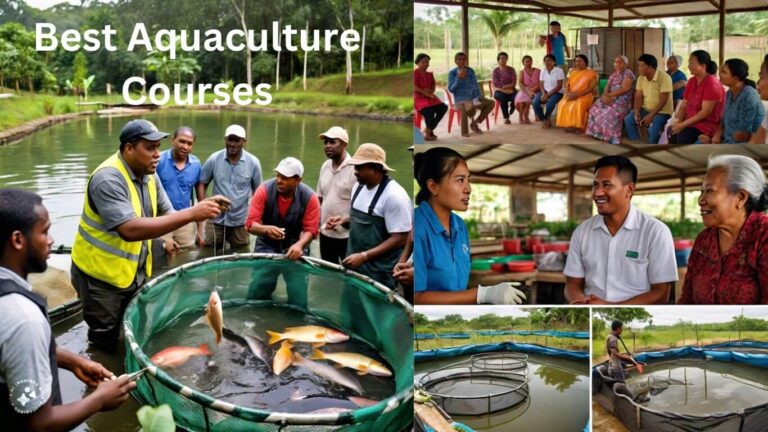Best Sources of Water are one of the most critical factors in the success of a fish farm since water is life when it comes to fish life. Different sources of water offer various advantages and challenges. This post will guide you through the best sources of water for fish farming, helping you make an informed decision for your setup.
1. Natural Water Sources
Rivers and Streams
Rivers and streams are excellent water sources for fish farming due to their continuous flow and natural aeration. They provide fresh water that can help maintain water quality. However, using river or stream water can come with challenges such as:
– Pollution: Ensure the water is free from industrial or agricultural pollutants.
– Seasonal Variability: Flow rates and water quality can vary with seasons, affecting your farm.
– Legal Regulations: There may be restrictions on water usage, so always check local regulations.
Importance and Ideal Use:
– Natural Aeration: The flow of rivers and streams naturally aerates the water, providing necessary oxygen levels for fish health.
– Continuous Supply: These sources offer a consistent water supply, which is crucial for maintaining stable conditions in your fish farm.
– Minimal Infrastructure: Utilizing existing water bodies can reduce the need for extensive infrastructure investments.
Lakes and Ponds
Lakes and ponds can be ideal for fish farming due to their stable water volume and easy access. They are particularly useful for extensive fish farming systems. Key considerations include:
– Water Quality: Regular testing for pollutants and managing algae growth is necessary.
– Management: Natural ponds may need periodic cleaning and management to prevent eutrophication.
– Stocking Density: Be mindful of fish density to avoid oxygen depletion. over stocking leads to competition of food and other resources by the fish. This can therefore lead to cannibalism.
Importance and Ideal Use:
– Stable Environment: Lakes and ponds provide a more controlled and stable environment compared to flowing water sources.
– Large Volume: They offer a significant volume of water, suitable for larger fish farming operations.
– Natural Habitat: These sources can mimic natural habitats, promoting better fish growth and health.
2. Groundwater Sources
Wells
Wells are a reliable and controllable water source for fish farms, especially in areas with limited surface water. Benefits of using well water include:
– Consistency: Provides a stable and continuous water supply.
– Quality Control: Generally free from pollutants found in surface water, although testing for minerals and contaminants is still essential.
– Temperature: Groundwater temperatures are relatively stable, and beneficial for fish health.
However, well water can sometimes be hard, containing high levels of minerals like calcium and magnesium. Water treatment may be necessary to adjust hardness and pH levels.
Importance and Ideal Use:
– Controlled Supply: Wells allow for control over the water supply, ensuring consistent availability and quality.
– Protection from Pollution: Groundwater is less likely to be polluted compared to surface water sources.
– Temperature Stability: The relatively stable temperature of groundwater is ideal for maintaining optimal conditions for fish growth.
3. Rainwater Harvesting
Collecting rainwater is an eco-friendly and cost-effective option for fish farming. This method involves capturing and storing rainwater for later use. The advantages of rainwater harvesting include:
– Purity: Rainwater is typically low in contaminants.
– Cost-Effective: Reduces dependency on other water sources and lowers water costs.
– Sustainability: Promotes water conservation and reduces environmental impact.
Considerations for rainwater harvesting:
– Storage: Requires adequate storage facilities to ensure a continuous supply.
– Treatment: Rainwater must be filtered and treated to remove impurities before use in fish farming.
– Climate Dependency: The system’s efficiency depends on local rainfall patterns.
Importance and Ideal Use:
– Sustainable Resource: Rainwater harvesting promotes sustainability by utilizing a renewable water source.
– Cost Savings: Reduces reliance on costly water sources, lowering operational costs.
– Environmental Benefits: Minimizes environmental impact by reducing runoff and conserving water.
4. Municipal Water Supply
Using municipal water for fish farming can be convenient and reliable. Municipal water is treated to meet potable standards, ensuring the safety of fish. Benefits include:
– Accessibility: Easily accessible and requires minimal initial setup.
– Consistency: Provides a consistent and dependable water supply.
– Quality Control: Regularly monitored and treated for contaminants.
Challenges of using municipal water:
– Cost: It can be expensive compared to other water sources.
– Chlorine and Chloramines: Municipal water often contains disinfectants that can be harmful to fish. Dechlorination is necessary before use.
– Regulations: Be aware of local water use regulations and potential restrictions.
Importance and Ideal Use:
– Reliability: Municipal water provides a highly reliable and controlled source of water.
– Quality Assurance: Regular treatment and monitoring ensure high water quality.
– Convenience: Ideal for small to medium-sized fish farms with easy access to municipal infrastructure.
5. Desalinated Water
In coastal areas or regions with limited freshwater resources, desalinated water can be an alternative. This involves removing salt from seawater to make it suitable for fish farming. Benefits include:
– Abundance: Provides a plentiful supply of water in coastal areas.
– Controlled Quality: Desalination processes can produce high-quality water tailored to specific needs.
However, desalinated water has some drawbacks:
– Cost: Desalination is energy-intensive and can be expensive.
– Infrastructure: Significant infrastructure is required for desalination and water transport.
– Environmental Impact: The desalination process can have environmental impacts, such as brine disposal.
Importance and Ideal Use:
– Unlimited Supply: Provides a virtually limitless source of water in coastal regions.
– Quality Control: Desalinated water can be precisely tailored to meet the specific needs of your fish farm.
– Adaptability: Ideal for areas with scarce freshwater resources, enabling fish farming in otherwise unsuitable locations.
Conclusion
Selecting the best water source for your fish farm is a crucial step that impacts the health and productivity of your fish. Natural water sources, groundwater, rainwater harvesting, municipal water, and desalinated water each offer unique benefits and challenges. Assess your local conditions, water quality, and regulatory requirements to make the most informed decision. By carefully choosing your water source, you can ensure a sustainable and successful fish farming operation.
You may also want to check out the post Water Preservation in Fish Farms





